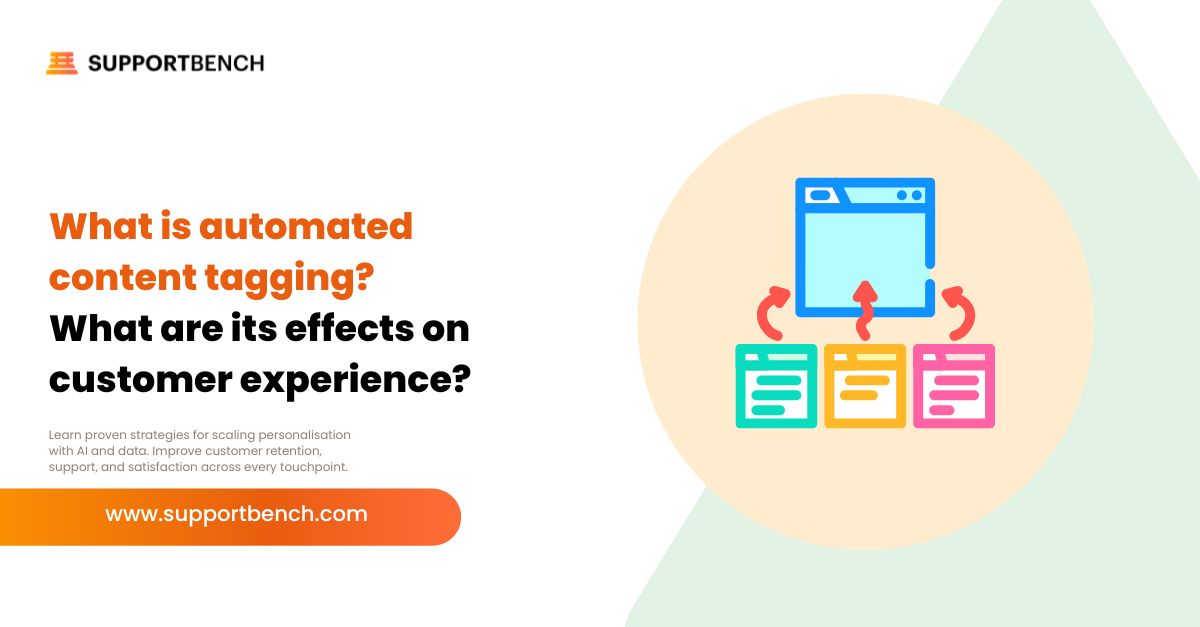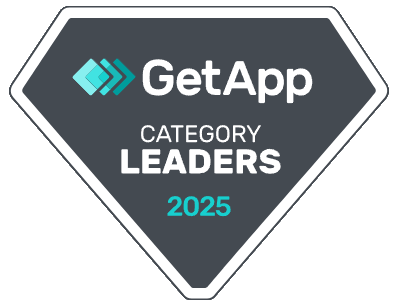Every customer interaction contributes to a broader narrative. With customer journey analysis, businesses can piece that narrative together—tracking behaviour across channels, spotting friction, and finding moments to deliver more meaningful, personalised experiences.
This guide explores how journey analysis works, what data makes it effective, and how your team can turn insights into action—improving engagement, reducing churn, and driving conversions.
You’ll also learn how Supportbench supports this approach through features like unified customer profiles, multi-channel mapping, and AI-powered personalisation—bringing journey intelligence directly into your support and CRM systems.

What is customer journey analysis?
Customer journey analysis is the practice of collecting and interpreting behavioural data across every touchpoint a customer has with your brand. It moves beyond static mapping by showing what customers actually do—not just what businesses expect.
Unlike a traditional journey map, which outlines assumed stages, journey analysis layers in real-time context, sentiment, and behaviour. This helps teams understand the why behind actions, revealing patterns that signal interest, frustration, or opportunity.
It links touchpoints like live chat, email, product usage, and support tickets into a cohesive, omnichannel view. Instead of isolated data, you get a continuous story that highlights moments affecting engagement, retention, and customer lifetime value.
By turning scattered interactions into actionable insights, journey analysis becomes the backbone of personalisation—empowering marketing, support, and product teams to respond to actual customer needs, in the moment.
Why Customer Journey Analysis Matters for Personalisation and Customer Experience
Customer journey analysis isn’t just a diagnostic tool—it’s a strategic advantage. When used effectively, it helps teams deliver smarter, more timely experiences that boost satisfaction and reduce operational strain.
Here’s how it creates impact across the lifecycle:
Improves Relevance Across Channels
Journey data reveals where a customer is, what they’ve done, and what they’re likely to do next. With this context, teams can:
✔︎ Tailor messaging based on current behaviour
✔︎ Align support and content with real-time intent
✔︎ Optimise timing for offers and outreach
Identifies and Removes Friction
Repeated actions, drop-offs, or escalations often point to pain points. With journey analysis, teams can:
✔︎ Detect confusion or dissatisfaction early
✔︎ Intervene before small issues escalate
✔︎ Minimise support volume by resolving root causes

Powers Data-Driven Personalisation
Rather than relying on segments or guesses, teams can personalise based on real behaviour. This unlocks:
✔︎ Trigger-based automation
✔︎ Tailored onboarding and retention paths
✔︎ Offers and content aligned with user needs
Enables Proactive Support
When you understand the path a customer is on, you can anticipate issues before they surface. This lets teams:
✔︎ Flag users at risk of churn or friction
✔︎ Escalate high-effort journeys automatically
✔︎ Act quickly when patterns suggest trouble ahead
Aligns Teams Around a Unified View
A shared customer lens improves coordination across departments. Journey data helps teams:
✔︎ Keep messaging consistent across channels
✔︎ Link support efforts to business metrics
✔︎ Break down silos with shared insights
What are the stages of a customer journey?
To personalise effectively, you first need to understand how customers move from discovering your brand to becoming loyal advocates. Each stage reveals unique behaviours and opportunities for tailored engagement.

1. Awareness
This is where the journey begins. A customer discovers your brand through ads, content, referrals, or search.
Key signals: impressions, click-through rates, search queries, and time on page.
Goal: Capture interest and build initial trust.
2. Consideration
At this point, the customer is actively comparing options. They might read reviews, browse features, or ask questions through chat.
Key signals: repeat visits, scroll depth, content downloads, and chatbot interactions.
Goal: Provide relevant answers and highlight differentiators.
3. Conversion
The customer decides to take action—signing up, subscribing, or making a purchase.
Key signals: final support interactions, pricing page visits, CTA clicks.
Goal: Remove friction and reinforce confidence.
4. Onboarding
After conversion, the onboarding experience sets the tone. It’s where customers learn how to get value from your product or service.
Key signals: tutorial completions, setup actions, login frequency.
Goal: Help users get to value quickly and avoid early churn.
5. Engagement
The customer is now actively using your product or service. This phase is rich with behavioural insights.
Key signals: feature usage, support history, content engagement.
Goal: Deepen value and identify upsell or cross-sell opportunities.
6. Retention and Loyalty
Long-term success depends on continued satisfaction and relevance.
Key signals: renewal behaviour, NPS or CSAT scores, referral activity.
Goal: Reinforce value, resolve pain points, and reward loyalty.

Essential Tools for Effective Customer Journey Analysis
Analysing the customer journey isn’t just about gathering data—it’s about turning that data into insights you can act on. The following tool categories are key to making that happen.
Journey Mapping and Visualisation
These tools help visualise the full customer experience across channels, revealing friction points and patterns of engagement.
Key signals: user paths, channel touchpoints, entry/exit points, drop-off rates.
Goal: Understand the customer’s actual flow, not just assumed paths.
Look for solutions that support timeline-based behaviour tracking and integrate omnichannel customer interaction tracking. Tools like Smaply, UXPressia, Gliffy, FullStory, and Heap offer journey maps enriched with session data and behavioural context.
CRM and Unified Customer Profiles
A centralised profile system connects journey insights to real people. It houses preferences, history, and interaction context.
Key signals: communication history, ticket logs, user preferences, profile scoring.
Goal: Enable personalisation and responsiveness at every stage.
Supportbench’s unified profiles combine behavioural and support data to fuel smarter workflows and deeper customer understanding.
Behavioural Analytics and Funnel Tracking
These tools break down what users do—clicks, page visits, feature usage—and how they move through your funnel.
Key signals: event tracking, cohort comparison, retention curves, goal completions.
Goal: Optimise experiences and identify high-impact behaviours.
Platforms like Mixpanel, Amplitude, and Google Analytics 4 offer the advanced insights advanced customer analytics for CX teams need to refine their strategies.

AI-Powered Support and Personalisation
AI tools make it possible to deliver dynamic, real-time responses based on where a user is in their journey.
Key signals: issue patterns, sentiment detection, behaviour-driven triggers.
Goal: Automate personalisation and scale proactive support.
Supportbench’s AI-powered support automation triages tickets, escalates risk cases, and recommends next steps—without manual work.
Data Integration and Workflow Automation
To get a full picture, data must flow seamlessly between systems. Integration platforms help unify journey data across your tech stack.
Key signals: API calls, synced customer records, automation triggers, workflow status.
Goal: Turn insights into timely action across all departments.
Supportbench connects directly to CRM and support ticketing platforms, keeping journey context at the centre of service delivery.
What Data Should You Collect and Why It Matters
Not all data is created equal. To make customer journey analysis truly valuable, you need to focus on behavioural, contextual, and interaction-based data that reflects the real experience—not just surface metrics.
Here’s what to prioritise:
Behavioural Data
This is the foundation of journey analysis. It includes how users navigate, interact, and respond throughout their journey.
Key signals: clicks, page views, feature usage, login frequency, and drop-off points.
Goal: Understand what drives action—or inaction—and where personalisation is most needed.
Behavioural insights also fuel using behavioural data for support prioritisation. For example, if a customer repeatedly visits help pages without resolution, it could trigger an automatic escalation.
Engagement and Channel Data
Knowing where and how customers reach out—email, live chat, phone, or self-serve—helps refine your communication strategy.
Key signals: contact frequency, preferred channels, responsiveness.
Goal: Ensure support and messaging align with customer preferences.
Sentiment and Feedback Signals
These offer qualitative insight into how customers feel at various points in the journey.
Key signals: CSAT scores, NPS, open-text feedback, emotional tone in chat logs.
Goal: Detect satisfaction and dissatisfaction moments that warrant action or follow-up.

Lifecycle Stage
A customer’s needs change depending on where they are in the journey.
Key signals: onboarding completion, usage frequency, renewal proximity.
Goal: Personalise communication and support based on journey context.
New users might need more education. Long-term customers may need fast, efficient service with less hand-holding.
Support History and Resolution Patterns
Past interactions tell you a lot about recurring issues and areas of frustration.
Key signals: issue type, resolution time, frequency of contact, escalation patterns.
Goal: Improve service delivery, reduce repeated issues, and enhance long-term loyalty.
When combined, these data types provide a full picture of the customer experience—enabling smarter personalisation and more timely intervention.
Turning Journey Insights Into Personalised Experiences
Collecting journey data is just the start—its true value comes from using it to create tailored, timely experiences that resonate with each customer.
Here’s how to turn insights into action:
Segment Customers by Journey Context
Use real behaviour and lifecycle stage to create smarter, more relevant segments.
Key signals: onboarding progress, login frequency, interaction history.
Goal: Deliver targeted messages that reflect where each customer actually is.
For instance, you can identify new users who haven’t completed setup, high-value accounts with delayed logins, or returning visitors who still haven’t converted.
Trigger Relevant Communications and Workflows
When you know what customers are doing—or not doing—you can respond instantly.
Key signals: drop-off events, unresolved issues, in-product behaviour.
Goal: Automate nudges, alerts, or escalations based on real-time activity.
If someone abandons onboarding, a proactive live chat prompt or quick-start video can re-engage them. If they visit help docs repeatedly, an automated support trigger can fast-track their case.
Automate Timely Personalisation
With the right integration, journey signals can feed into automated systems.
Key signals: behaviour-triggered events, CRM data, account type.
Goal: Make each interaction feel personal—without manual effort.
For example, automation can assign a dedicated success manager to a high-risk account or recommend a feature based on recent activity.
Build Personalised Onboarding at Scale
Onboarding is one of the most critical use cases for journey-based personalisation.
Key signals: tutorial engagement, setup completion, time to first value.
Goal: Help users succeed early—and reduce churn from the start.
Using journey insights, you can design personalised onboarding experiences at scale, adapting flows based on product usage, role, or engagement levels.

Real Examples of Personalised Support and Marketing in Action
Customer journey analysis isn’t just a theoretical model—it’s already transforming how leading brands engage and retain customers. Here are a few standout examples:
Amazon: Behaviour-Based Product Recommendations
Amazon uses real-time browsing and purchase history to suggest products tailored to each user.
Key signals: viewing habits, purchase patterns, wishlist activity.
Impact: Amazon’s personalised engine is a major revenue driver, contributing to a reported 9% year-over-year sales increase—from $469.8 billion in 2021 to $514.0 billion in 2022.1
Starbucks: AI-Driven Personalised Offers
Starbucks sends targeted promotions based on individual purchase behaviour and preferences.
Key signals: order history, store visits, reward program engagement.
Impact: The brand generates over 400,000 variations of hyper-personalised messages—boosting loyalty and frequency of visits.2
Fetch Rewards’ Receipt-Based Personalisation
Fetch Rewards analyses item-level purchase data from submitted receipts to create unique rewards for users.
Key signals: product-level data, frequency of shopping, brand preferences.
Impact: Particularly effective among Gen Z, with 76% saying they expect brands they’re loyal to to offer rewards that reflect their preferences.3
Supportbench: Built for Journey-Centric Customer Experiences
Supportbench doesn’t just display journey data—it puts it to work. The platform is designed to transform behavioural insights into real-time, personalised support that scales.
Unified Profiles That Evolve with the Journey
Supportbench creates living customer profiles that update with each new interaction.
Key signals: historical data, touchpoint activity, current journey stage.
Goal: Give agents the full context—past, present, and predicted.
These profiles combine behavioural, sentiment, and support data in one place, making every response faster, more relevant, and more human.
AI That Interprets and Acts on Journey Data
Using machine learning, Supportbench recognises patterns like onboarding delays or repeated ticket creation.
Key signals: behavioural triggers, risk signals, sentiment shifts.
Goal: Automate interventions, escalate at-risk cases, and recommend personalised content.
AI-powered support automation allows support teams to respond to problems before customers even report them.
Dynamic Workflows Based on Customer Behaviour
Workflows adapt in real-time to what the customer does—or doesn’t do.
Key signals: skipped steps, frequent logins, unresolved queries.
Goal: Guide customers forward without manual involvement.
Example: A customer who fails to complete setup receives a step-by-step guide, while one facing login errors triggers a custom escalation path.
Integrated Dashboards for Real-Time Action
Supportbench integrates journey insights into daily operations—not just reports.
Key signals: live engagement trends, satisfaction scores, journey bottlenecks.
Goal: Help CX teams act on insights immediately.
By embedding analytics into operational dashboards, Supportbench closes the gap between what the data shows and what support teams can do about it.
Conclusion
Customer journey analysis isn’t just about observing behaviour—it’s about using that insight to shape every interaction, from the first click to long-term loyalty. By connecting behavioural data with actionable workflows, businesses can reduce friction, personalise support, and build stronger customer relationships.
Supportbench helps you make that connection seamless. With tools like multi-channel journey mapping, real-time profile tracking, AI-powered workflows, and built-in CRM integrations, your team can move beyond reactive service—toward proactive, journey-driven engagement that scales.
When your support systems understand the full customer story, every touchpoint becomes an opportunity to deliver value.















